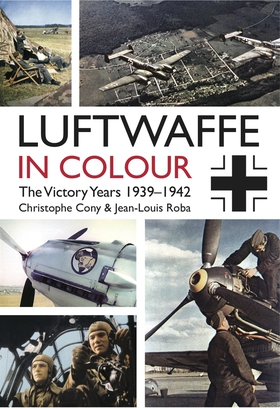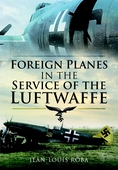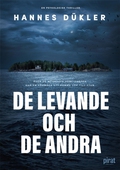
Lägg till önskelistan
Luftwaffe in Colour: The Victory Years e-bok
Pris
75 kr
This remarkable work pulls the lid off one of the legendary air forces in history at the very peak of its power—unveiling the men and machines as they truly existed day-to-day, underneath the propaganda of their own regime and the scare stories of their enemies.
In Hitler’s Germany, color photography was primarily co-opted for state purposes, such as the military publication Signal, or the Luftwaffe’s own magazine, Der Adler (Eagle). But a number of men had cameras of their...
E-Bok
75 kr
Pris
Förlag
Casemate
Utgiven
15 Februari 2021
Längd
128 sidor
Genrer
Historia & Arkeologi, Samhälle Och Politik, Fackböcker
Språk
English
Format
epub
Kopieringsskydd
Vattenmärkt
ISBN
9781612004105
This remarkable work pulls the lid off one of the legendary air forces in history at the very peak of its power—unveiling the men and machines as they truly existed day-to-day, underneath the propaganda of their own regime and the scare stories of their enemies.
In Hitler’s Germany, color photography was primarily co-opted for state purposes, such as the military publication Signal, or the Luftwaffe’s own magazine, Der Adler (Eagle). But a number of men had cameras of their own, and in this painstakingly acquired collection, originally published in France, we can witness true life on Germany’s airfields during the period of the Luftwaffe’s ascendancy.
Thus not only do we see famous planes such as the Me-109, Ju-87 or He-111, but the wide variety of more obscure types with which the Germans began the war. The array of Arados, Dorniers, Heinkels—not to mention elegant 4-engine Condors—that were initially employed in the war are here in plain sight and full color, providing not only an insight into WWII history but a model maker’s dream.
Just as fascinating are the shots of the airmen themselves, along with their ground crews—full of confidence and cheer as they bested every other air force in Europe during these years, with the single exception of the RAF’s Fighter Command in late-summer 1940. But that was no big stumbling block to the Luftwaffe, which had bigger fish to fry in Russia and North Africa the following year.
In the authors’ next work, “The Years of Defeat,” we will see how the war turned more grim for the Luftwaffe, even as its expertise and skill at more deadly aircraft designs, increased. In “The Victory Years” we have a uniquely intimate view of an air force at the very apex of its capabilities.





